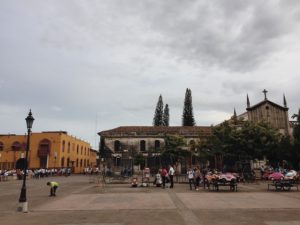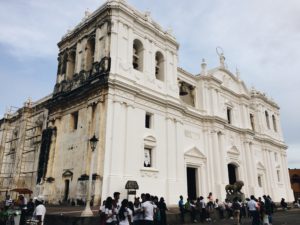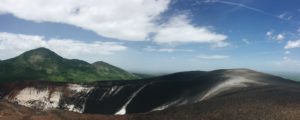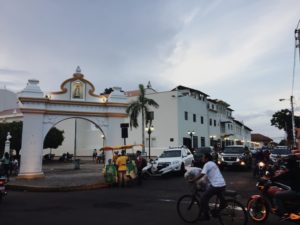Lost in León: Granada’s Edgier Cousin
Established in the early 1500s, León is Nicaragua’s second-oldest city and a revolutionary hotbed. Its crumbling colonial beauty and colorful political murals are romantic reminders of the city’s rich history. A fierce rival of its showier and prettier cousin, Granada, León’s charm allowed it to wrestle for the spot of capital city until Managua nabbed the title as a compromise in 1852. But the rivalry continues to this day, Granada showing off its fresh coats of paint and trendy colonial hotels while León postures around its prodigious cathedral, the largest in Central America, and its rebellious historical legacy.

In 1956, a young poet assassinated President Somoza Garcia at a party in the town, setting off the most violent period of the nation’s history. The Somoza dictatorship grew increasingly threatened by a restless and discontented people, and pockets of revolution began to spring up across the country. As the Frente Sandinista formed, grew, and battled the dictatorship, León became the first city liberated from the Somozas in 1979. The town today is still fiercely proud of being a Sandinista stronghold, and the ‘mural brigades’ that swept across the country with the Front’s victory in 1979 have clearly left their mark. Visitors will be hard pressed to find a street empty of revolutionary murals, monuments, or statues. And the paintings of fallen heroes over bullet-ridden walls will tell you legends of the city’s fierce political tradition that endure to this day.
In the center of León lies the site of another fascinating story. The Basílica de la Asunción, also known as the Cathedral of Leon, is a beautifully masterful representation of baroque and neoclassical architecture. Its impressive façade faces the quaint parque central and evokes the instinctive knowledge that the cathedral should have been built for a city five times the size. One would not be wrong to think so.

Of the many myths which surround the construction of Central America’s biggest cathedral, built curiously in this small Nicaraguan town, one explains that this model was originally intended for Peruvian Lima, a city much more fitting in size. Another explanation is that local clergy falsely submitted a more modest blueprint to the Spaniards and built the significantly more stunning, current variant instead, all behind the Spaniards’ backs.
Regardless of what the true story is, the cathedral is one of León’s main attractions, housing the tomb of famed poet Rubén Darío and offering a rooftop visit for two dollars. An adventurous meander atop the cathedral’s whitewashed cupolas and domes will offer stunning views of the city and the actively smoking volcanoes beyond.
In addition to its Catholic and political history, León is renown for its tradition of poetry and art. The town houses the Centro de Arte Fundación Ortiz-Gurdián, Central America’s finest museum of contemporary art, stocked with the likes of Botero and Picasso, as well as a Museum of Legends and Traditions, and a museum specially dedicated to Nicaragua’s favorite son, Rubén Darío.

For the more adventurous spirits, León is also the easiest access point for what is rated by CNN as the #2 thing to do on the thrill seeker’s vacation bucket list. The well-known (and almost infamous) Bigfoot Hostels is a great spot to meet often-intoxicated young backpackers and go on wonderful pre-packaged adventures. The non-profit Quetzaltrekkers also offers the opportunity to hike up an ash-black active volcano, burning-hot ground and all, enjoy a stunning view over lush fields and sparkling lakes, and slide down the country’s most active volcano on a board reaching speeds up to 95 kph (yikes!).

All in all, there is something for everyone in this town of students, artists, poets, and travelers. The diverse activities of a town steeped in culture easily match, if not surpass, the quaint charm of colonial Granada. It is, in fact, rumored that many fall in love with Granada, but León is the city that eventually steals their hearts.
